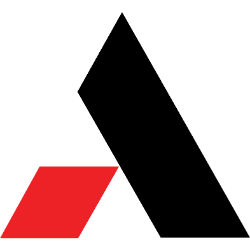Overall, AMETEK demonstrates strong business quality with solid financial performance and a diverse portfolio, although it faces challenges such as organic sales declines and project delays. The future prospects appear promising with a focus on acquisitions, innovation, and improving order trends, albeit with a cautious growth forecast for 2025.
Analysis Date: February 4, 2025
Last Updated: March 11, 2025
Trailing Twelve Months (TTM) values provide a view of the company's performance over the last year.
Graham Value Metrics
Benjamin Graham's value investing approach focuses on finding stocks with a significant margin of safety between their intrinsic value and market price.
Intrinsic Value
Estimated fair value based on Graham's formula
$192.45
Current Market Price: $151.91
IV/P Ratio: 1.27x (>1.0 indicates undervalued)
Margin of Safety
Gap between intrinsic value and market price
21.0%
Graham recommended a minimum of 20-30% margin of safety
Higher values indicate a greater potential discount to fair value
ROE: 14.707621778635716
ROA: 2.646794661451864
Gross Profit Margin: 35.67789626547648
Net Profit Margin: 19.825505173471946
Trailing Twelve Months (TTM) values provide a view of the company's performance over the last year.
Strong Net Profit Margin
The net profit margin of 19.83% indicates that AME is able to convert a significant portion of its sales into actual profit, reflecting effective cost management.
Solid Return on Equity
A return on equity of 14.71% demonstrates that AME is efficiently using shareholders' equity to generate profits, which is a strong indicator of management performance.
Moderate Operating Profit Margin
0.2564
Operating Profit Margin
The operating profit margin of 25.64% is solid but could indicate room for improvement in operational efficiency compared to peers.
About Profitability Metrics
Profitability metrics measure a company's ability to generate earnings relative to its revenue, operating costs, and other relevant metrics. Higher values generally indicate better performance.
Return on Equity (ROE)
Measures how efficiently a company uses its equity to generate profits
14.71%
10%
15%
Higher values indicate better returns for shareholders
TTM (as of 2025-04-16)
Return on Assets (ROA)
Measures how efficiently a company uses its assets to generate profits
2.65%
3%
7%
Higher values indicate better asset utilization
TTM (as of 2025-04-16)
Gross Profit Margin
Percentage of revenue retained after accounting for cost of goods sold
35.68%
20%
40%
Higher values indicate better efficiency in production
TTM (as of 2025-04-16)
Net Profit Margin
Percentage of revenue retained after accounting for all expenses
19.83%
8%
15%
Higher values indicate better overall profitability
TTM (as of 2025-04-16)
Low Debt Levels
0.2154
Debt-to-Equity Ratio
The debt-to-equity ratio of 0.22 suggests that AME has a conservative capital structure with low reliance on debt, reducing financial risk.
Strong Interest Coverage
15.75
Interest Coverage Ratio
An interest coverage ratio of 15.75 indicates that AME can easily cover its interest obligations, suggesting strong financial stability.
Current Ratio Below 2
A current ratio of 1.24 indicates that AME has more current liabilities than current assets, which could pose liquidity risks if short-term obligations need to be met.
Low Quick Ratio
The quick ratio of 0.75 suggests that AME may not have enough liquid assets to cover its current liabilities without selling inventory, raising liquidity concerns.
About Financial Health Metrics
Financial health metrics assess a company's ability to meet its financial obligations and its overall financial stability.
Debt to Equity Ratio
Total debt divided by total equity
0.22x
1.0x
2.0x
Lower values indicate less financial leverage and risk
Less than 1.0 is conservative, 1.0-2.0 is moderate, >2.0 indicates high risk
Q4 2024
Current Ratio
Current assets divided by current liabilities
1.24x
1.0x
2.0x
Higher values indicate better short-term liquidity
Less than 1.0 is concerning, 1.0-2.0 is adequate, greater than 2.0 is good
Q4 2024


